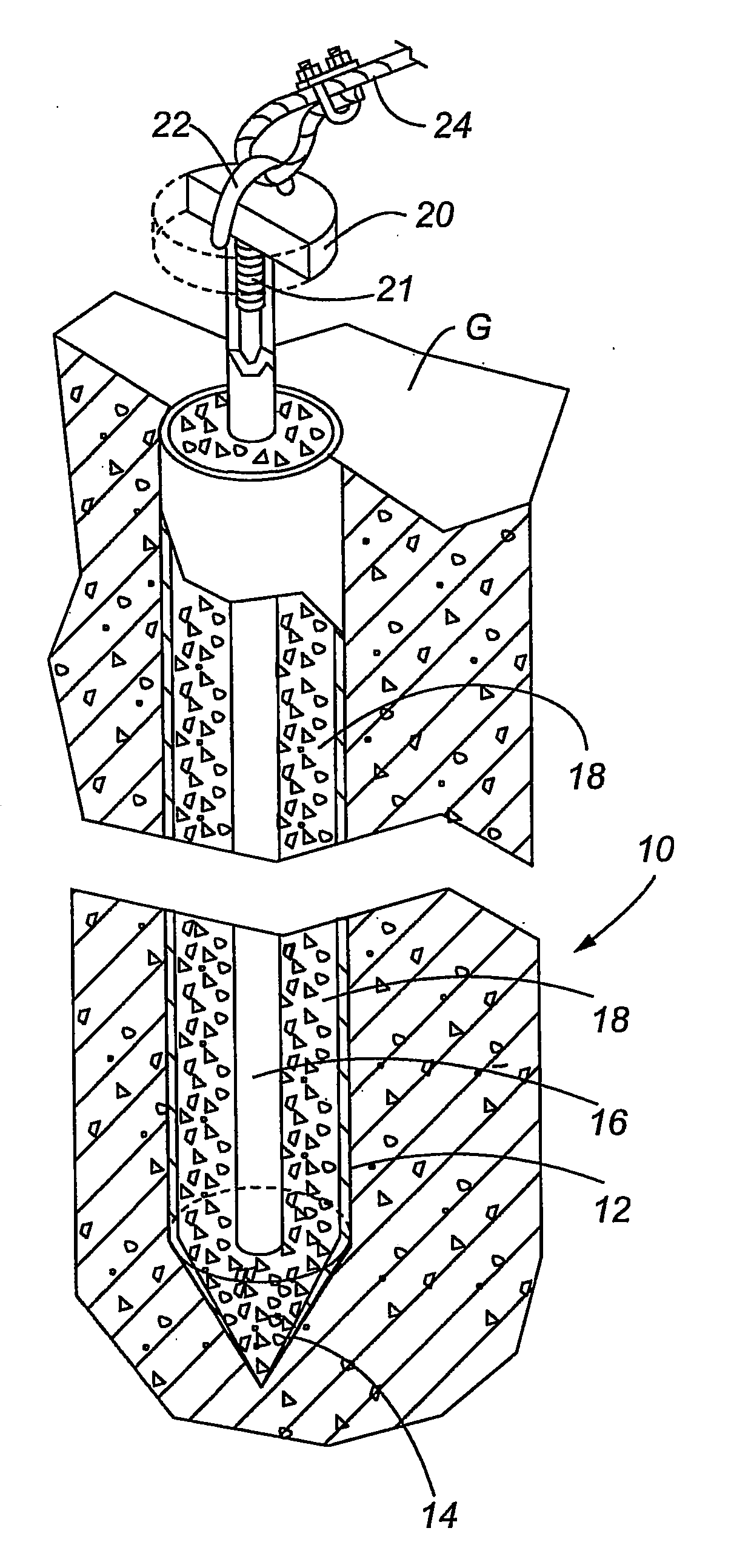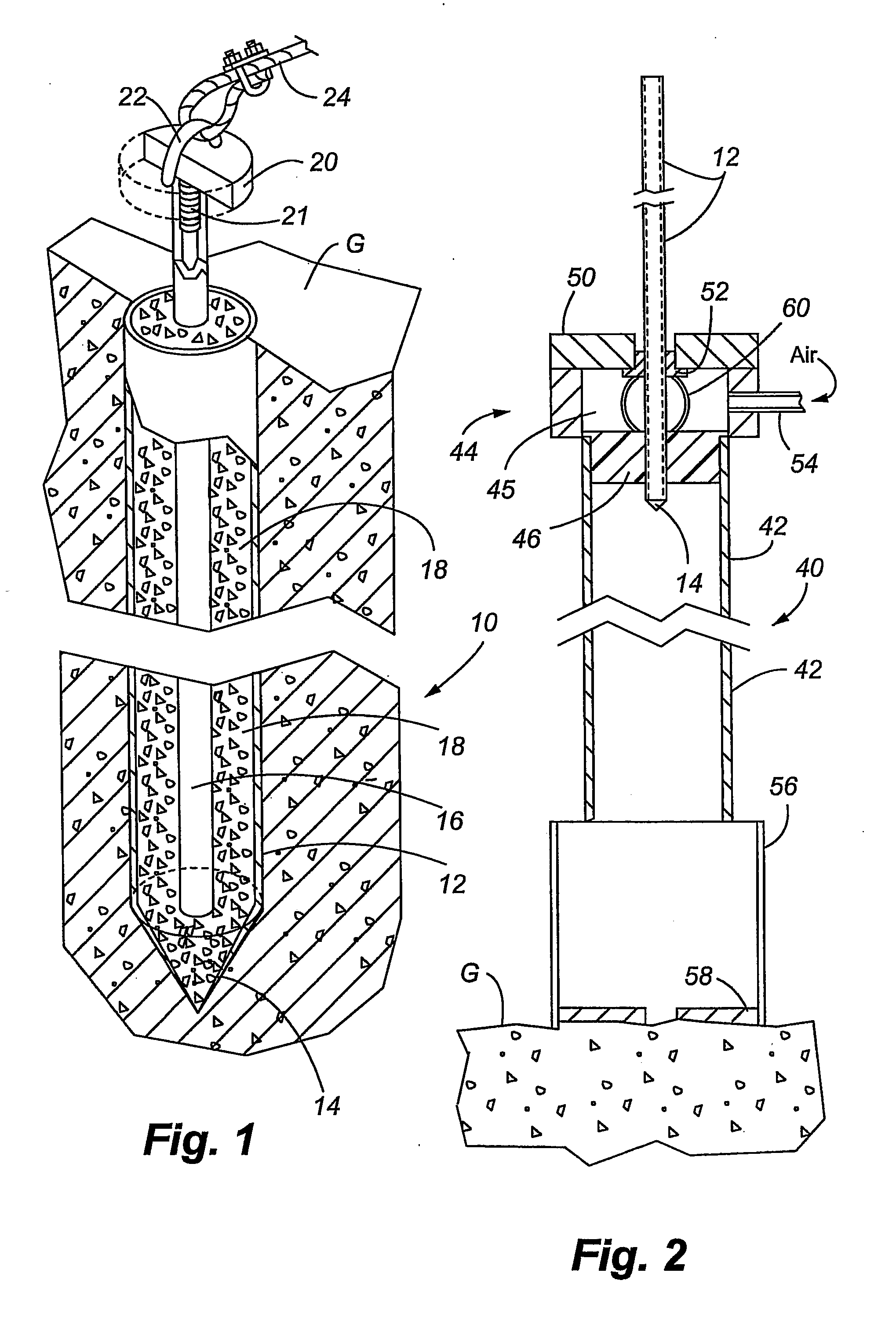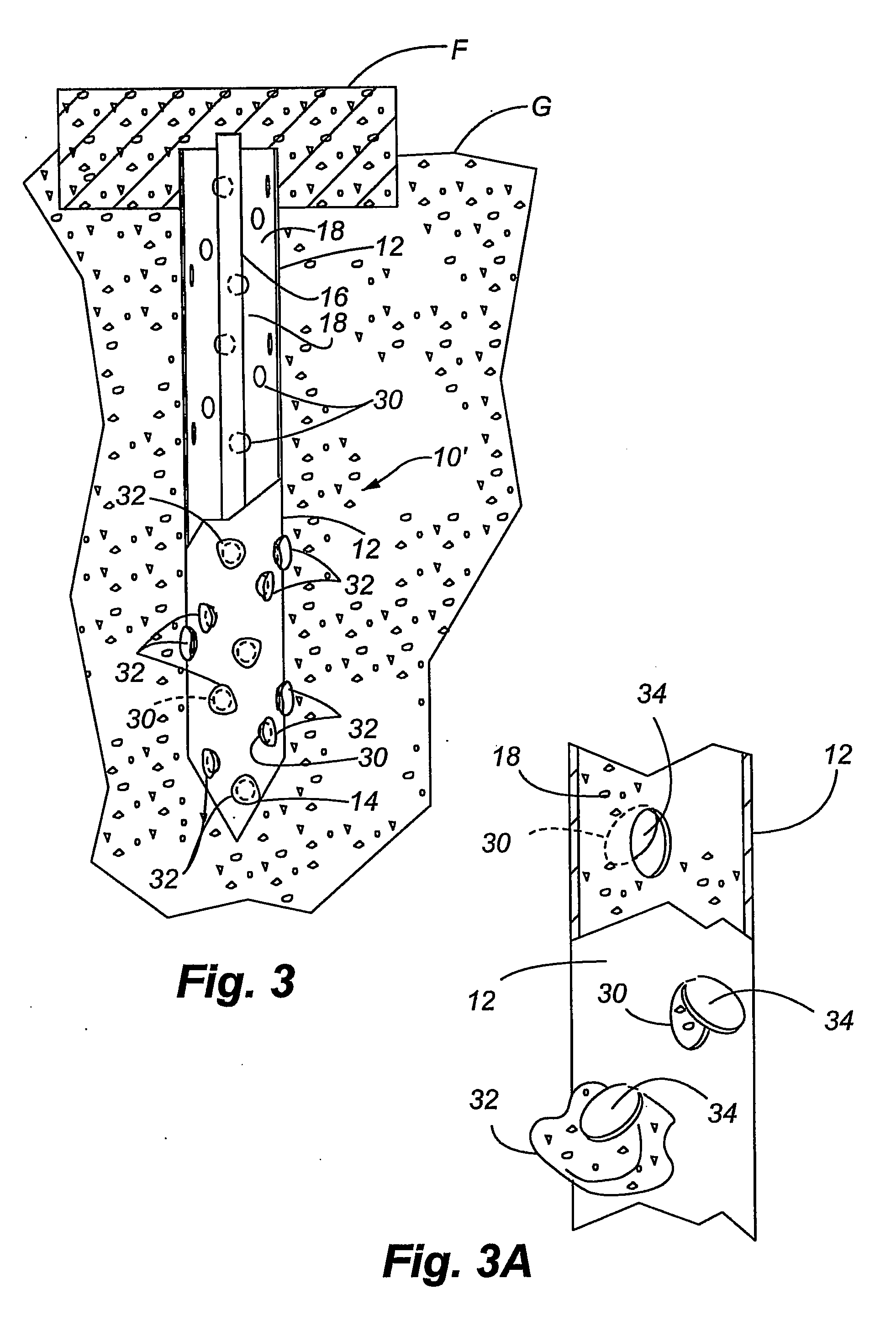Method and apparatus for creating soil or rock subsurface support
a subsurface support and rock technology, applied in earth drilling, mining structures, construction, etc., can solve the problems of reducing the ability of the support to provide designed support, requiring active support, and unstable earth surrounding or near a man made structure, etc., to achieve cost-effective, high-resistance corrosion resistance, and simple shortened body length
- Summary
- Abstract
- Description
- Claims
- Application Information
AI Technical Summary
Benefits of technology
Problems solved by technology
Method used
Image
Examples
Embodiment Construction
[0028]Referring to FIG. 1, the subsurface support 10 in a first embodiment of the present invention is shown installed in the ground G. The support device includes an outer member, preferably in the form of a steel or iron tube 12 having a selected length and diameter, and having an integral pointed tip 14. The tip 14 can be conical in shape that facilitates emplacement of the outer tube as by a launcher, as discussed below. After the outer tube is emplaced, the stabilizing mixture is placed in the interior chamber of the outer tube. Then, an inner support member that can be in the form of an epoxy coated steel rod or bar is then placed within the stabilizing mixture prior to hardening of the mixture. When the stabilizing mixture cures, the inner support member 16 can provide support to an overlying structure in compression, tension, and / or shear. Depending upon the design requirements of the particular structure to be built, a plurality of subsurface supports may be emplaced at des...
PUM
 Login to View More
Login to View More Abstract
Description
Claims
Application Information
 Login to View More
Login to View More - R&D
- Intellectual Property
- Life Sciences
- Materials
- Tech Scout
- Unparalleled Data Quality
- Higher Quality Content
- 60% Fewer Hallucinations
Browse by: Latest US Patents, China's latest patents, Technical Efficacy Thesaurus, Application Domain, Technology Topic, Popular Technical Reports.
© 2025 PatSnap. All rights reserved.Legal|Privacy policy|Modern Slavery Act Transparency Statement|Sitemap|About US| Contact US: help@patsnap.com



